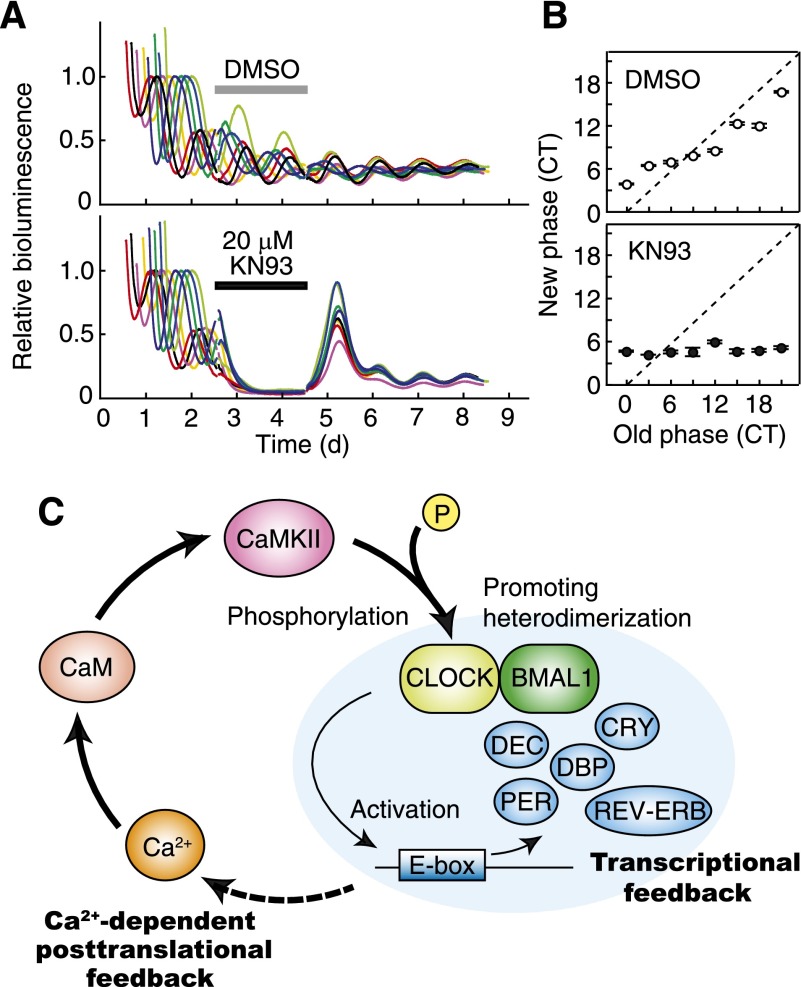Figure 7.
The activity level of CaMKII is important for the phase of the circadian oscillator. (A) Effect of transient inhibition of CaMKII on the phase of the cellular clock. Rat-1-Bmal1-luc cells were exposed to 20 µM KN93 (in 0.1% DMSO) or 0.1% DMSO (control) at various circadian time points (CT0 was defined as the peak time of Bmal1-luc expression), and, 48 h after the treatment, the medium was replaced by the conditioned medium that was collected from the culture just prior to the drug treatment. The use of the conditioned medium minimized a phase-shifting effect induced by the medium change (Kon et al. 2008). The eight colored lines represent eight cultures treated with the drug for 48 h starting at different times. The traces were then aligned so that the treatment times overlap. Representative results from two independent experiments are shown. (B) Phase transition curves for the transient inhibition of CaMKII. The horizontal axis indicates the phase at which the drug was administered, and the vertical axis shows the phase to which the clock was reset just after the treatment. The latter phase was calculated from the subsequent rhythm. Data are the mean with variation of two independent experiments. (C) A model for cell-autonomous circadian oscillation. The circadian oscillation in the intracellular Ca2+ levels induces rhythmic activation of calmodulin–CaMKII signaling. CaMKII regulates dimerization of CLOCK and BMAL1 and enhances E-box-dependent gene expression. The transcriptional feedback system may drive rhythmic activities of Ca2+ regulators in order to maintain the cell-autonomous Ca2+ signaling oscillation.

